
铁铝榴石:特性、含义、价值和益处
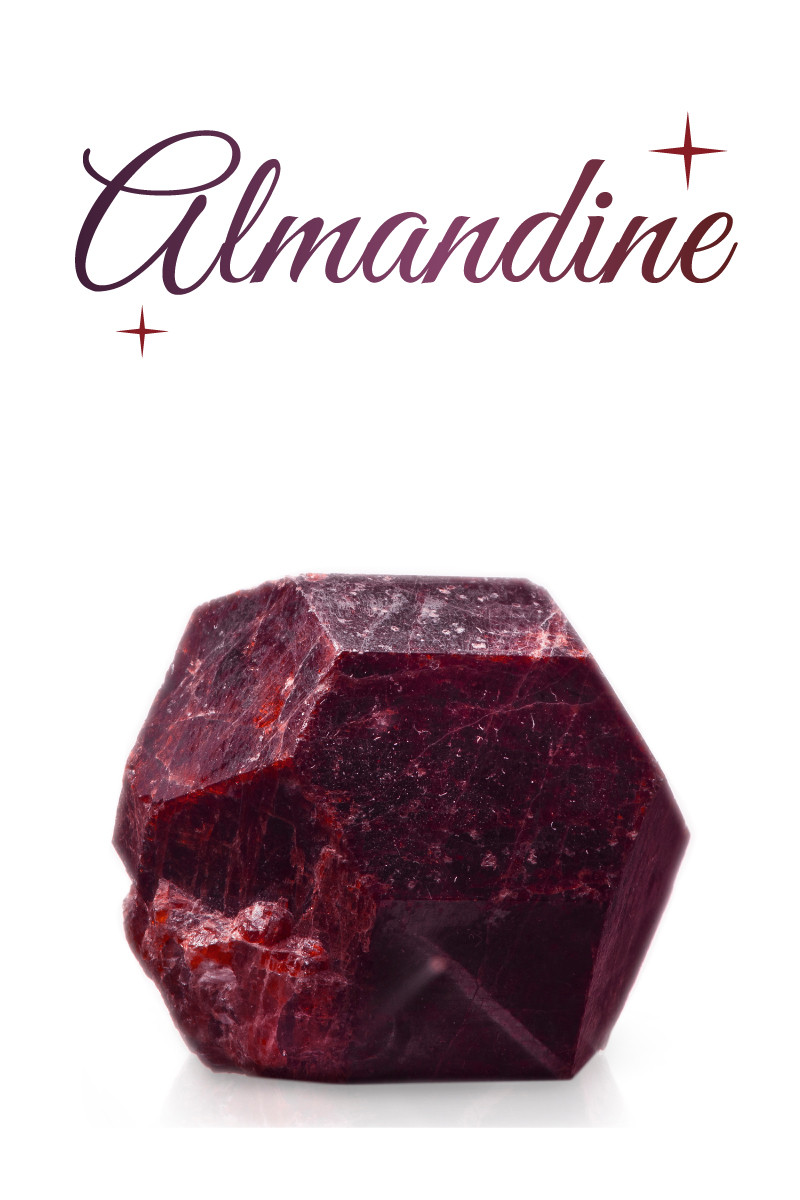 铁铝榴石是一种深红色、洋红色至棕黑色的石榴石,自古以来就备受人们的喜爱和使用。它可以说是与镁铝榴石并列最为著名的石榴石。
铁铝榴石是一种深红色、洋红色至棕黑色的石榴石,自古以来就备受人们的喜爱和使用。它可以说是与镁铝榴石并列最为著名的石榴石。
铁铝榴石是稀有还是常见?铁铝榴石非常常见——事实上,它是最常见的石榴石品种。尽管如此,宝石级铁铝榴石晶体在所有开采的铁铝榴石中只占一小部分。但由于它们储量丰富,因此可以制成美观且价格实惠的宝石!
那么,铁铝榴石的价格范围是多少?它又有何特别之处?我们将在本篇铁铝榴石宝石指南中为您解答所有疑问。
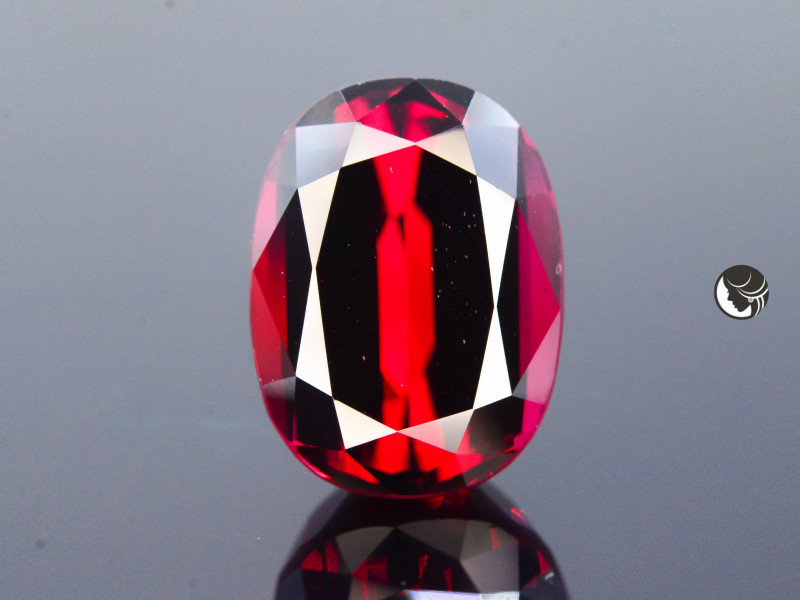
什么是铁铝榴石?
铁铝榴石是一种半宝石,是传统的一月诞生石。它也是摩羯座和水瓶座的幸运石,以及传统的结婚二周年纪念石。如果您居住在美国康涅狄格州,铁铝榴石就是您的州宝石!
在英国,铁铝榴石可能被称为“almandite”。其他替代名称包括:
珍贵的石榴石
东方石榴石
痈
铁铝榴石
“红宝石”这一昵称具有历史意义,我们稍后会详细介绍,但“铁铝榴石红宝石”这一名称用词不当,因为石榴石和红宝石是不同的宝石。
除了华丽的宝石之外,铁铝榴石还有许多工业用途。
由于其莫氏硬度在石榴石中较高,铁铝榴石非常适合用作磨料。这些磨料可以用于 砂纸,或替代二氧化硅用于喷砂。
用于磨料的工业级石榴石可能被称为“岩石石榴石”。磨料石榴石的一些意想不到的用途是木工和水过滤。
此外,石榴石还可以帮助地质学家研究岩石形成时的温度和压力,这被称为地质温压计。同样,当它们被用作地质年代计或热年代计时,它们也可以指示地质年代线。
铁铝榴石规格和特性
铁铝榴石与镁铝榴石和锰铝榴石同属柱铝榴石系列。柱铝榴石组富含铝,与富含钙的钙铬榴石系列(包括钙铬榴石、钙铝榴石和钙铁榴石)形成对比。
铁铝榴石是一种硅酸铁铝,其化学式为 Fe3Al2Si3O12 或 Fe3Al2(SiO4)3。鉴别铁铝榴石的关键在于其吸收光谱。吸收光谱描述了当白光照射到宝石上时,哪些颜色会穿透,哪些不会穿透。
使用分光镜,您会在铁铝榴石(或以铁铝榴石为主的石榴石)中看到三个强吸收带:一个强吸收带,宽度为 200 Å,位于 5760 处,另外两个强吸收带位于 5260 和 5050 处。
以下是铁铝榴石的所有属性:
莫氏硬度:7-7.5
颜色:深红色、紫红色、红棕色、棕黑色、黑色;很少紫色或粉红色;有时黑色和红色
晶体结构:等轴/立方
光泽:玻璃光泽、油脂光泽或树脂光泽 - 粗糙;玻璃光泽至亚金刚石光泽 - 抛光
透明度:透明至不透明
折射率:1.75-1.83
密度:3.93-4.30(星光石榴石可达4.76)
解理:无
断口:贝壳状至不规则状
条痕:白色
发光:无
多色性:无
光学效果:星光;很少变色

铁铝榴石的种类
与大多数石榴石(尤其是镁铝榴石)一样,铁铝榴石几乎从来都不是纯净的;你通常会发现它与镁铝榴石或锰铝榴石混合。一些含有铁铝榴石的品种包括:
莫桑比克石榴石
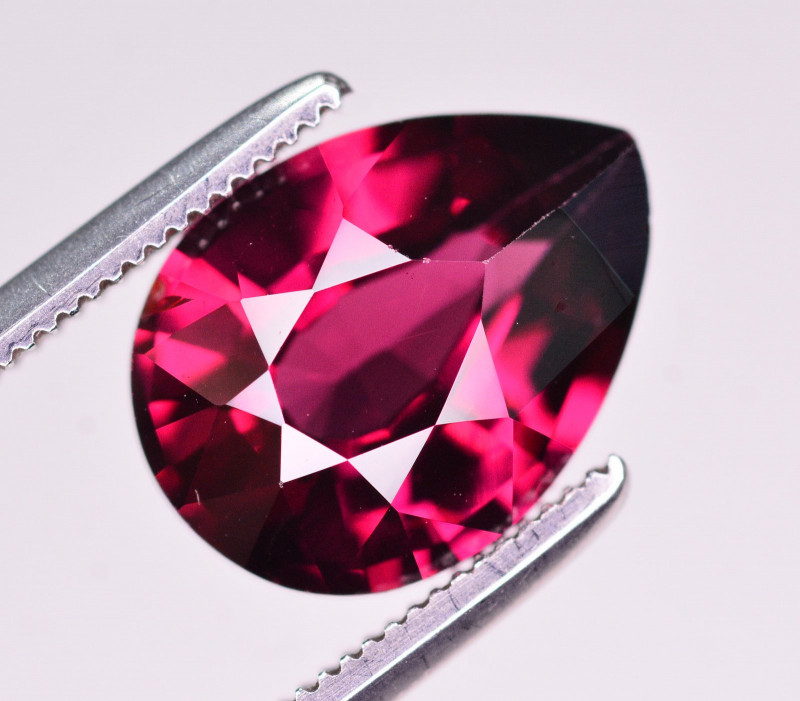
莫桑比克石榴石呈红色,带有棕色和橙色底色。它们产于非洲莫桑比克,包括铁铝榴石和镁铝榴石。
红榴石

玫瑰榴石通常呈紫红色,由铁铝榴石和镁铝榴石混合而成。它也可能呈淡玫瑰红、紫罗兰色或紫色。如果添加锰铝榴石,则颜色会更浅。铁和镁杂质会形成深紫色的“葡萄石榴石”玫瑰榴石。
坦桑尼亚玫瑰榴石呈明亮的洋红色,带有淡粉色闪光,融合了三种紫榴石的光泽。这些被称为“紫榴石”。
最珍贵的玫瑰榴石呈亮紫色,而颜色较红的则价值较低。
马来亚(Malaia)石榴石
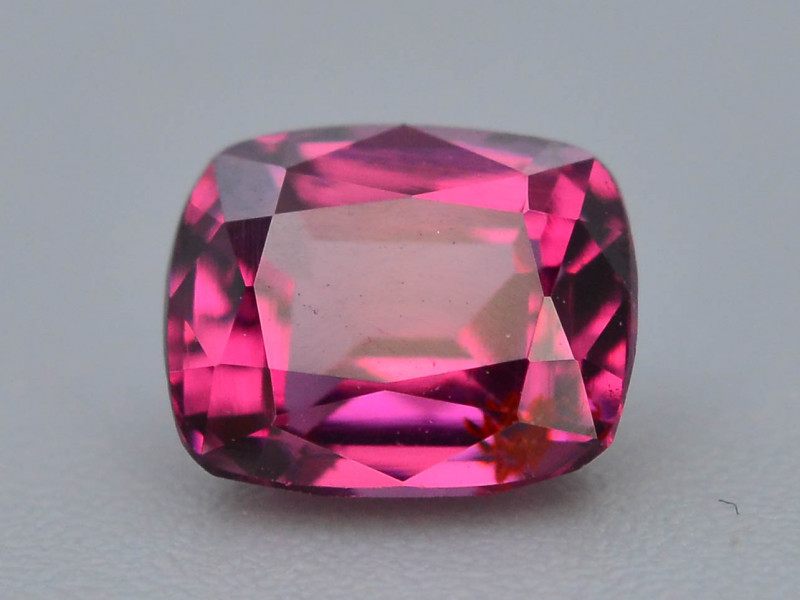
马来亚(或马拉亚)石榴石通常为镁铝榴石-锰铝榴石,但也可能含有铁铝榴石和钙铝榴石。这些石榴石呈粉色、橙红色、橙色或红色。
变色石榴石
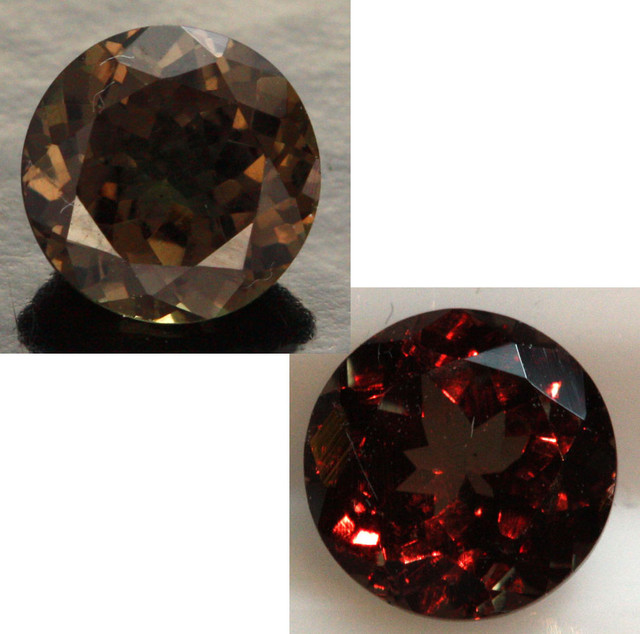
所有石榴石都会变色,但铁铝榴石却很少见。其中一种是铁铝榴石-钙铝榴石-锰铝榴石的混合色,呈现出绿黄色或棕色色调,并逐渐过渡到紫红色。
其他变色的紫铝石包括:
爱达荷州:镁铝榴石-铁铝榴石,红色至紫红色
挪威:镁铝榴石-铁铝榴石,紫红色至蓝绿色或紫红色至酒红色
星光石榴石

星光石榴石是一种罕见的品种,呈现出4或6道光线反射,被称为星光。这些宝石主要产自美国爱达荷州,是该州的州石。
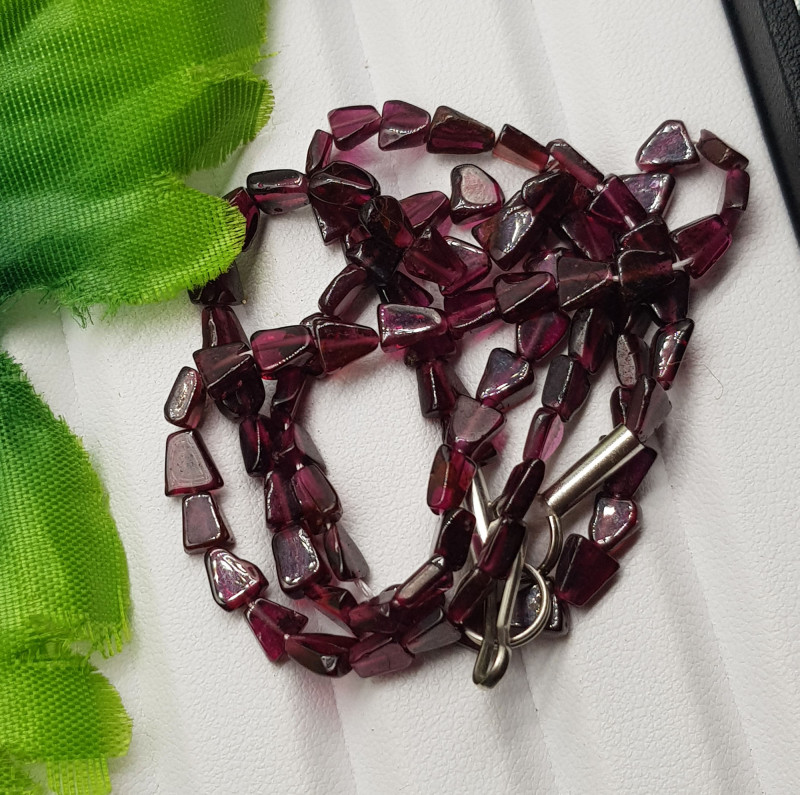
铁铝榴石的意义和历史
铁铝榴石象征着深沉的爱、激情和渴望。它本身也象征着勇气、成就和守护。波斯传说中,铁铝榴石可以抵御自然灾害,通过颜色变浅来预示即将到来的危险。
铁铝榴石已为人所知数百年。铁铝榴石的名称源于公元1世纪罗马学者老普林尼对阿拉班迪库斯(alabandicus)一词的错误解读。阿拉班达是小亚细亚的一个城镇,也是铁铝榴石的产地。
这些凸圆形宝石历史上被称为“carbuncles”,拉丁语意为“燃烧的煤”,因为这些深红色的宝石形似燃烧的木炭。在古董珠宝中,你或许会看到“carbuncle”这个词。
历史
目前可获得的最古老的证据表明古埃及人使用铁铝榴石的历史可以追溯到公元前 3,500 年。
像铁铝榴石这样的红色石榴石是古代晚期(公元4至6世纪)最受欢迎的宝石之一。当时流行的一种用途是用于装饰性金属制品镶嵌,即景泰蓝。
一件值得注意的文物是 Winfarthing 吊坠,这是一枚 7 世纪的胸针,于 2014 年在英国诺福克郡被发现。这枚金胸针上镶有数百颗微小的铁铝榴石宝石。
石榴石珠宝在维多利亚时代(1837年至1901年)最为流行。在此之前,只有皇室、贵族和神职人员才能买得起石榴石这样的宝石。工业革命使石榴石走进了大众的视野。
然而,随着石榴石的普及,它的受欢迎程度也随之降低,因为它不再与地位挂钩。幸运的是,这也意味着价格更加实惠!
1967年,美国爱达荷州将星光石榴石命名为该州的州石。同样,美国康涅狄格州于1977年将铁铝榴石命名为该州的州石。

铁铝榴石的治疗功效
与所有宝石一样,铁铝榴石的颜色影响着它作为治疗石的功效。典型的红色调唤起了红色宝石的激情、动力和能量。
同时,棕色色调非常适合接地,尤其是当用作打开根脉轮的脉轮石时 - 带来力量和联系!
紫铝石中更浓烈的紫色给紫色宝石带来了精神觉醒和智慧的益处。
身体康复
据称,铁铝榴石具有以下身体益处:
力量与耐力
生育力和性欲
血液循环
铁的吸收
免疫系统功能
情绪疗愈
据说,石榴石的情感益处可以增强以下感觉:
联系
弹力
稳定
动机
除了具有治疗功效外,铁铝榴石还有价值吗?这取决于它的性质。
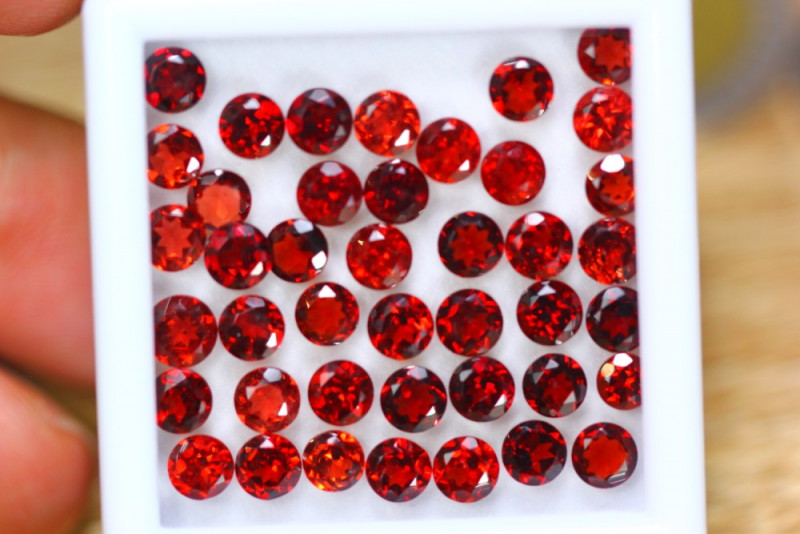
铁铝榴石宝石属性
铁铝榴石的分级基于颜色、切工、净度、克拉重量和处理方式的标准类别。
颜色
铁铝榴石的颜色范围从经典的深红色、紫红色到褐色。部分颜色是由铁元素决定的,但铁元素也可以被锰(来自锰铝榴石)和镁元素取代,从而形成不透明的褐色宝石。
经典的红色通常价值最高,尤其是大颗透明的宝石,因为大颗宝石通常颜色过深。颜色好的玫瑰榴石和马来亚石榴石价格最高。
切
大多数刻面石榴石都是铁铝榴石,其形状多种多样。雕刻品并不常见,但许多历史悠久的或设计精美的铁铝榴石雕刻品都价值不菲。铁铝榴石也可以切割成珠饰。
虽然凸圆形宝石(通常称为“红宝石”)不太常见,但星光石榴石必须切割成凸圆形才能展现其星光。由于星光石榴石的切割难度极高,因此这类宝石价值不菲。
明晰
净度描述了宝石中可见内含物的程度。铁铝榴石通常具有I型彩色宝石净度等级,这意味着几乎没有或完全没有肉眼可见的内含物。镁铝榴石-铁铝榴石混合物可能为II型,含有一些可见的内含物。
也就是说,铁铝榴石中可能含有以下内含物:
虽然这些内含物通常会降低价值,但某些形成星光的角闪石或辉石矿物的纤维状内含物会增加价值。
克拉重量
铁铝榴石晶体大小不一,但较小的晶体颜色更鲜艳。当其形成于母岩中,并经风化作用后,可以分离成形状良好、通常较大的晶体。不过,某些产地破碎的晶体可能只能产出2克拉以下的宝石。
大多数铁铝榴石的每克拉价格不会因其大小而发生显著变化。
例外的是玫瑰榴石(其价值会根据其重量在 1 克拉以下、10 克拉以下或 10 克拉以上而增加)和马来亚榴石(其价值会根据其重量在 1 克拉以下、5 克拉以下和 5 克拉以上而增加)。
目前最大的铁铝榴石重174克拉!
处理剂和合成物
虽然不常见,但有些铁铝榴石可能经过处理。通常,铁铝榴石-锰铝榴石或镁铝榴石-铁铝榴石会经过加热,形成一层金属涂层,有时是赤铁矿涂层。后者历史上被称为“变形石榴石”。
大多数合成的铁铝榴石(价值较低)是通过热液生长形成的。你可以通过种子板的存在来识别它们。

铁铝榴石的形成和来源
与大多数石榴石一样,铁铝榴石通常形成于富含铝的沉积岩在压力和热量的作用下发生变质变化。这些条件将内部的矿物转化为石榴石。
你可以在变质岩中找到铁铝榴石,例如富含云母的石榴石片岩,它可能与岩石一起形成于基质中。它们也存在于冲积矿床和火成岩中。
采矿地点
美国纽约州拥有世界上最大的石榴石矿,约占全球工业石榴石产量的90%。此外,工业用“岩石石榴石”也产自中国和印度。
印度和巴西是宝石级铁铝榴石的主要产地。其他产地包括:
阿富汗
奥地利
加拿大
捷克
埃塞俄比亚
格陵兰
日本
肯尼亚
缅甸
挪威
巴基斯坦
俄罗斯
所罗门群岛
瑞典
坦桑尼亚
乌拉圭
美国(阿拉斯加州、科罗拉多州、康涅狄格州、缅因州、密歇根州、宾夕法尼亚州、南达科他州)
越南
赞比亚
主要的铁铝榴石品种来源有:
马来亚:肯尼亚、马达加斯加、坦桑尼亚
红榴石:巴西、印度、北卡罗来纳州(美国)、斯里兰卡、坦桑尼亚、泰国
莫桑比克:莫桑比克(令人震惊)
马达加斯加和斯里兰卡出产大型铁铝榴石。

铁铝榴石的价格和价值
由于铁铝榴石是最常见的石榴石,因此大多数价格都比较实惠。仅有的例外是稀有的玫瑰榴石和马来亚石榴石。
首先,我们来看看大小不一的铁铝榴石的克拉单价范围。“顶级色”铁铝榴石指的是饱和度适中、色调中深的铁铝榴石,颜色包括:橙红色、红色、紫红色、红紫色。
顶级颜色:每克拉 1-30 美元
莫桑比克:每克拉5-35美元
红色至紫色的铁铝榴石凸圆形宝石的价格也是每克拉 1 至 20 美元,无论大小。
玫瑰榴石刻面宝石按尺寸划分的价格如下:
0.5 至 1 克拉:每克拉 20 至 100 美元
1 至 10 克拉:每克拉 20 至 150 美元
10克拉以上:每克拉150-300美元
现在,马来亚石榴石的刻面价格:
0.5 至 1 克拉:每克拉 30 至 60 美元
1 至 5 克拉:每克拉 150 至 200 美元
超过 5 克拉:每克拉 300-3,000 美元
莫桑比克石榴石凸圆形宝石的价格通常在每克拉5-7美元之间。玫瑰榴石凸圆形宝石的价格范围为:1克拉以下每克拉4-6美元;1-10克拉每克拉5-30美元;10克拉以上每克拉最高可达40美元。
铁铝榴石雕刻品的价格也比较昂贵,起价为 450 美元,最高可达 84,500 美元。
宝石级原始铁铝榴石晶体的价格通常为每克拉 0.02 至 0.08 美元。
铁铝榴石的保养和维护
幸运的是, 铁铝榴石的保养非常简单!它没有解理,硬度适中,足够耐用,适合日常佩戴。不过,您可以选择在更脆弱的铁铝榴石戒指上进行保护性镶嵌,以防止刮伤。
你可以用温和的肥皂、温水和软毛牙刷轻轻清洁铁铝榴石。切勿使用机械清洁器或蒸汽清洁器。
含有内含物的铁铝榴石对极端高温较为敏感。请将宝石存放在阴凉干燥处,远离其他宝石。
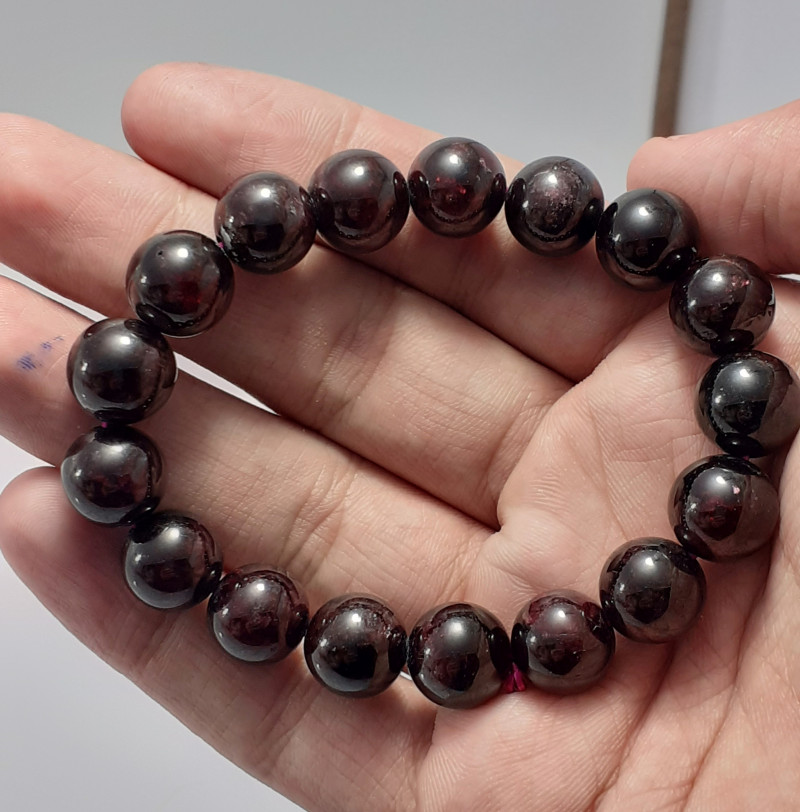
与铁铝榴石一起发现更深的爱!
铁铝榴石是各种爱情的完美象征——它能吸引浪漫,增进友谊,并鼓励自爱。拥有一颗像铁铝榴石这样华丽而实惠的宝石,定能为您带来喜悦、激情和爱!
搜索Gemstone Encyclopedia
最新的文章
棕榈象牙雕刻,又称植物象牙,是象牙的天然替代品,取自南美洲棕榈树(Phytelephas palm)的果实,并以符合伦理的方式采集。本指南将带您全面了解棕榈象牙!
15th Jan 2026
彩虹格纹日光石是一种长石,由于内部含有各种包裹体,呈现出三种绚丽的光学效应。它绚丽多彩的光泽和格纹图案使其成为收藏家梦寐以求的珍宝!
12th Jan 2026
文章分类
How To's is where you will find helpful articles from gem Rock Auctions on how to cut gemstones, select gemstones and buy gemstones.
9文章数



